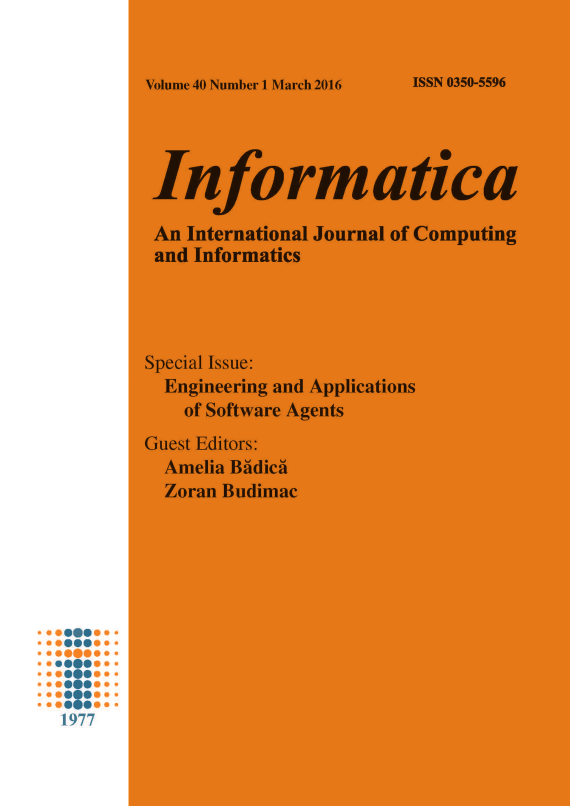A Novel Video Steganography Algorithm Based on Trailing Coecients for H.264/AVC
Abstract
Accompany with the growth of the speed in network, people’s living standard has greatly improved, but the threaten to its information security has also appeared, as an important branch of information security, steganography is a useful method to protect the secret information safety. In view of the high complexity of current video steganographic algorithms, and combining with the trailing coefficient produced in the process of quantization of H.264 encoding standard, we put forward a kind of algorithm based on trailing coefficients. The algorithm firstly conduct DCT transform on the frame, then obtain the trailing coefficient for each quantized DCT blocks, last, embedding by changing its values. The experimental result indicates that: this algorithm has little influence on video quality and has large capacity of steganography, and has a strong anti-steganalysis capability, high robustness. Above all, the information security has been protected.References
H. G. Zhang, R. Y. Du, J. M. Fu, et al. Information security: an independent discipline a new subject [J]. information and communication security, 2014, 5: 020.
H. J. Bi. A New Generation of Video Compression Standard---H.264/AVC [M]. Beijing: Posts & Telecom Press, 2005, 110-111.
G. L. Hua, Z. B. Li, B. Feng. Low frequency steganography algorithm for H.264/AVC [J]. Journal on Communications, 2013, 34(Z2), 47-50.
G. C. Langelaar, R. R. Lagendijk. Optimal differential energy watermarking of DCT encode images and video [J]. IEEE Transactions on Image Processing, 2001, 10(1): 148-158.
X. J. Ma. The Research on Video Data Hiding Algorithms Based on H.264/AVC [D].Wuhan: Huazhong Univercity of Science and Technology, 2010.
X. S. He, Z. Luo. A Novel Steganographic Algorithm Based on the Motion Vector Phase [C].International Conference on Computer Science and Software Engineering CSSE.2008.359: 822-825.
W. W. Zhang, R. Zhang, Y. J. Liu , et al . Robust Video Watermarking Algorithm for H.264/AVC Based on Texture Feature [J]. Journal on Communications, 2012, 33(3), 82-89.
C. H. Liu, O. T. Chen. Data Hiding in Intra Prediction Modes of H.264/AVC [J]. IEEE Press. 2008, 3025-3028.
Heidari, Mortaza, G.Shahrokh. Universal image steganalysis using singular values of DCT coefficients [C]. Information Security and Cryptology, 2013 10th International ISC Conference on. IEEE, 2013.
Downloads
Published
Issue
Section
License
I assign to Informatica, An International Journal of Computing and Informatics ("Journal") the copyright in the manuscript identified above and any additional material (figures, tables, illustrations, software or other information intended for publication) submitted as part of or as a supplement to the manuscript ("Paper") in all forms and media throughout the world, in all languages, for the full term of copyright, effective when and if the article is accepted for publication. This transfer includes the right to reproduce and/or to distribute the Paper to other journals or digital libraries in electronic and online forms and systems.
I understand that I retain the rights to use the pre-prints, off-prints, accepted manuscript and published journal Paper for personal use, scholarly purposes and internal institutional use.
In certain cases, I can ask for retaining the publishing rights of the Paper. The Journal can permit or deny the request for publishing rights, to which I fully agree.
I declare that the submitted Paper is original, has been written by the stated authors and has not been published elsewhere nor is currently being considered for publication by any other journal and will not be submitted for such review while under review by this Journal. The Paper contains no material that violates proprietary rights of any other person or entity. I have obtained written permission from copyright owners for any excerpts from copyrighted works that are included and have credited the sources in my article. I have informed the co-author(s) of the terms of this publishing agreement.
Copyright © Slovenian Society Informatika








